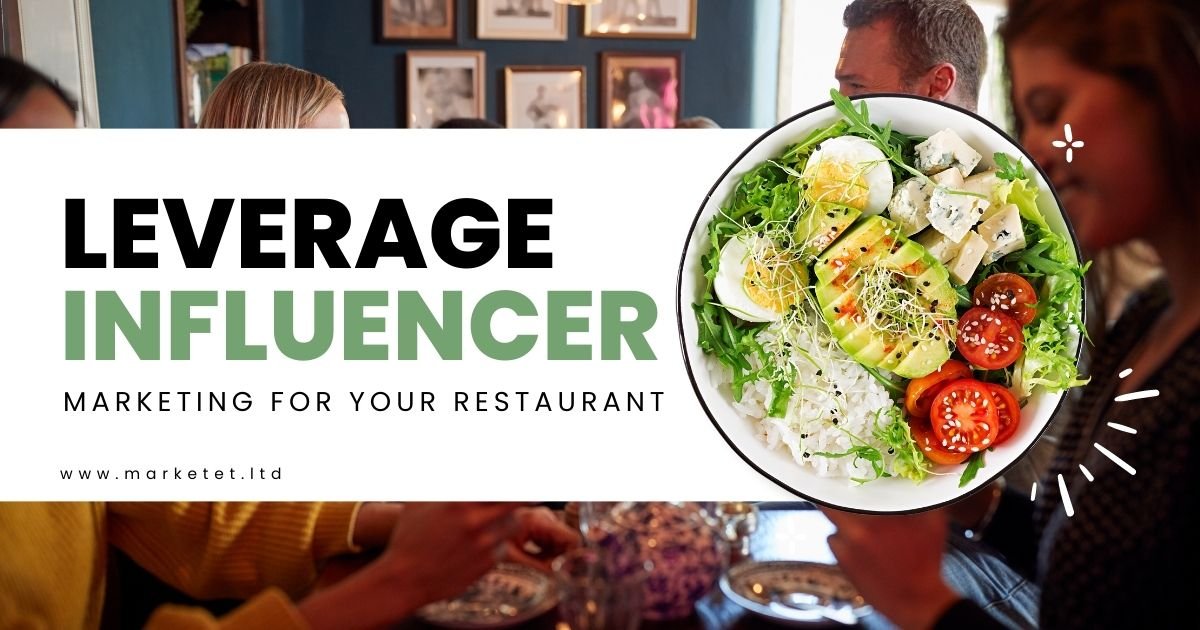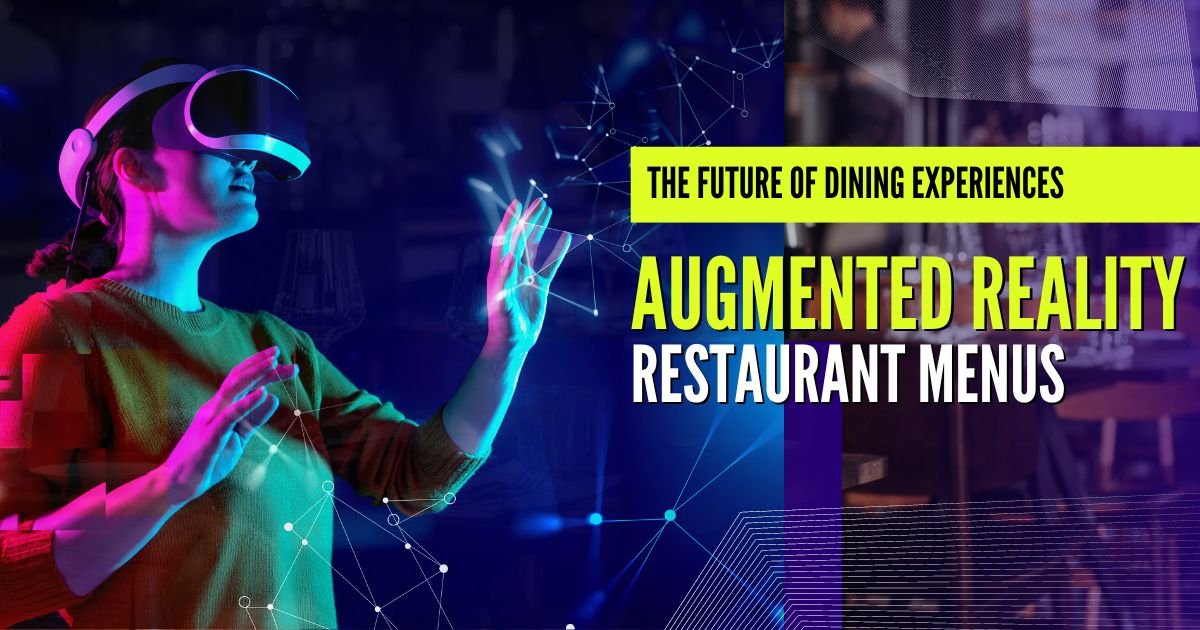Leveraging Influencers: A Restaurant’s Step-by-Step Guide to Boosting Online Presence Through Collaboration
In today’s digital age, influencer marketing has become an extremely popular and effective strategy for restaurants looking to increase their brand awareness and reach new audiences online. Partnering with influencers – individuals with a strong social media following and reputation in their niche – can help get your restaurant in front of thousands of potential new customers.
This comprehensive guide will walk you through the steps for running a successful influencer marketing campaign for your restaurant, from finding the right influencers to measuring results. Follow these tips to collaborate with influencers and food bloggers that will showcase your business to their engaged followers.
Why Influencer Marketing Works for Restaurants
Influencer marketing relies on leveraging an existing audience and reputation rather than building something entirely new. Influencers already have credibility and an established following in their niche. Their readers trust recommendations they make. Partnering with the right influencer allows you to tap into their ready-made audience and get your content and messaging in front of a highly targeted group.
Restaurants can benefit tremendously from influencer marketing. A few key advantages include:
- Increased awareness – Influencers introduce your brand to new audiences that may not have discovered you otherwise. Their content gets your name and food in front of potential new customers.
- Higher engagement – Followers are more likely to engage with branded content from influencers they know and trust rather than straight advertisements. You’ll likely see higher engagement rates on influencer content.
- Improved search rankings – Quality links and mentions from influencers can help boost your domain authority and SEO, improving search engine rankings.
- Cost effectiveness – Partnering with influencers tends to cost less than traditional advertising while drawing from a more targeted, relevant audience.
- More authenticity – Content directly from a restaurant can seem overly promotional. Influencer mentions come across as more authentic recommendations.
Clearly, leveraging influencers allows restaurants to tap into their follower base and credibility to drive real business results. Now let’s look at how to find and vet potential influencer partners.
Finding the Right Influencers for Your Restaurant
The first step is identifying relevant influencers that would be a good fit for your particular restaurant brand. Avoid the instinct to just go after influencers with the most followers. You want partners that have an audience demographic and content style that aligns with your business. Here are some tips for narrowing your search:
- Look at local food bloggers and Instagrammers covering your geographic area. Hyper-targeted influencers will produce better engagement and conversions.
- Search for influencers in your type of cuisine – food truck influencers, pizza influencers, vegan influencers, etc.
- Factor in aesthetics and photography style. Find influencers whose content vibe meshes with your restaurant’s look and feel.
- Don’t ignore smaller micro-influencers in the 1,000 to 100,000 follower range. Their engagement levels are often higher.
- Use free influencer marketing tools like BuzzStream, Upfluence, AspireIQ, and Traackr to discover and vet potential partners.
- Look through hashtags and geotags related to your location and cuisine to discover local influencers.
- Check who your competitors may be partnering with already. Avoid direct competitors but consider similar influences.
Take time to thoroughly review each potential influencer’s account and metrics. Look for consistently high engagement on their posts, quality photography and content, and an audience that makes sense for your brand. Ensure they have an aesthetic and voice that complements your own.
Reaching Out to Potential Influencers
Once you’ve identified prospective influencer partners, it’s time to reach out. Don’t go into the conversation cold. Personalize your pitch and clearly explain why you want to collaborate with them specifically.
Here are some tips for making initial contact:
- Start by complimenting them – show you follow their work and are a fan. Flattery will get you far.
- Don’t use a generic mass pitch. Personalize each email to show you’re familiar with their content.
- Share numbers that prove you have an established business, like years in operation, number of locations, or accolades.
- Have a clear call-to-action and proposed partnership ideas ready to pitch. Offer value to them.
- Be transparent that this is a business proposal but emphasize you’re a fan of their work.
- Follow up a week after your initial email if you don’t hear back. Stress your enthusiasm for partnering.
- Once you’ve made contact, move the conversation to a call or meeting to explain partnership details.
This first conversation is crucial for starting out on the right foot. Be professional and thoughtful. Treat them as a potential marketing partner rather than just asking for “exposure”. If done right, many will be open to collaboration if it’s the right fit.
Vetting Potential Influencer Partners
As you begin discussions with prospective influencers, you’ll need to vet them further to ensure it’s a good match. Avoid getting swept up in their popularity and dig deeper.
Here are some important things to look at when reviewing influencer partners:
- Request their full media kit and portfolio of brand partnerships. Review examples of past campaign work.
- Ask for recent analytics on their follower growth and engagement rates over time. Watch for dips or fake followers.
- Look at their audience demographics – location, age, gender, interests. Make sure it aligns with your customer base.
- Review a handful of recent posts and Stories. Check that posts get good engagement from real followers.
- Ask if they work with any of your direct competitors. Gauge how promotional their partnerships feel.
- Discuss pricing transparency upfront. Avoid influencers who push for maximum pay for minimal work.
- Consider running a small test post first before committing to assess performance.
You want to ensure you’re partnering with accounts that have an authentic, engaged following and will represent your brand well. Rushing into an agreement without vetting can lead to disappointing results, so do your due diligence.
Negotiating an Influencer Marketing Agreement
Once you’ve identified one or more viable influencer partners, it’s time to hash out the campaign details and compensation structure. Formalizing an agreement upfront lays out clear expectations.
You’ll want to discuss and finalize:
- Content specifics – number of posts, post types, possible recipes or video collabs, story features, etc.
- Content timeline – dates for any deliverables, restaurant visits, length of campaign
- Your expectations for captions – hashtags, mentions, CTAs you want included
- Usage rights for the content you provide like logos, photos, recipes
- Influencer compensation – free meals, gift cards, flat project fee, etc.
- Your guidelines or rules – details on what you will/won’t approve posting
- How you’ll track and measure campaign success metrics together
Having a candid conversation about these partnership details before finally agreeing to work together is crucial. Make sure you’re both on the same page about what’s involved. Spell everything out clearly in a formal contract.
Executing a Successful Influencer Marketing Campaign
You’ve found the perfect influencer match and have the partnership agreement signed. Now it’s time to collaborate on bringing your campaign to life. Help set your influencers up for success by providing everything they need to easily create compelling branded content.
Some tips for seamlessly executing influencer campaigns include:
- Send them free food and drinks to photograph and sample. Cater to any dietary needs or restrictions.
- Provide high-resolution logos, images, and graphics for them to incorporate into posts.
- Give them sample copy, captions and hashtags you want used. The easier you make it, the better the outcome.
- For in-person events, have signage and decor elements with your branding that will photograph well.
- Discuss ahead of time the types of shots and angles you’re hoping for. Provide inspiration.
- Share real-time feedback if you have suggestions for improving a certain post.
- Develop a reposting agreement so you can repurpose their content on your own social channels.
- Amplify their work by liking, commenting on, and sharing their branded posts and Stories. Tag them back and provide additional context for your audience.
Giving influencers all the tools and assets they need will result in higher quality, on-brand content for your partnership. Brief them thoroughly and provide ongoing feedback.
Measuring Your Influencer Marketing Results
The most important part of any influencer marketing campaign is measuring its effectiveness. You’ll want to closely track quantitative performance data throughout your partnerships.
Some key performance metrics to monitor include:
- Overall reach and impressions of influencer content
- Engagement rate on posts – likes, comments, shares, etc.
- Click-through rate on links, menus, or profile tags
- Coded discount or promo code usage and redemptions
- Traffic and followers driven to your website and social profiles
- Inquiries, reservations, or sales that resulted from the promotion
- Overall ROI – sales driven vs. campaign spend
Analyze this data both during and after the campaign. Look at which pieces of content performed best. Check if certain post types, call-to-action, or even time of day results in higher engagement and clicks.
Provide this feedback to your influencer partner so you can discuss adjustments or ideas for driving better results in the future.
You’ll also want to monitor qualitative measures like social listening. Check for increases in brand mentions, tags, and location check-ins. Look at reviews to see if people reference learning about you from an influencer post.
Tie campaign performance directly to bottom line business impact – not vanity metrics like overall reach. Use what you learn to optimize future influencer collaborations.
Conclusion
Implementing a strategic, targeted influencer marketing campaign can provide an impressive boost in credibility, awareness, and customer acquisition for restaurants. The key is partnering with just the right influencers and restaurant marketing agency that align with your brand and audience.
By taking the time to carefully identify potential partners, vetting their metrics and credibility, negotiating smart agreements, providing needed assets, and tracking performance – restaurants can leverage influencer marketing to drive impressive real world results.
Focus on quality over quantity when choosing collaborators. The right influencers with better engagement can outperform bigger names that aren’t the perfect fit. With this step-by-step guide, you can start identifying and connecting with just the right influencers for your restaurant. Stay focused on your business goals to drive real ROI from influencer campaigns.



